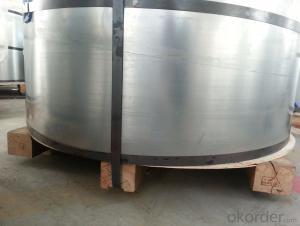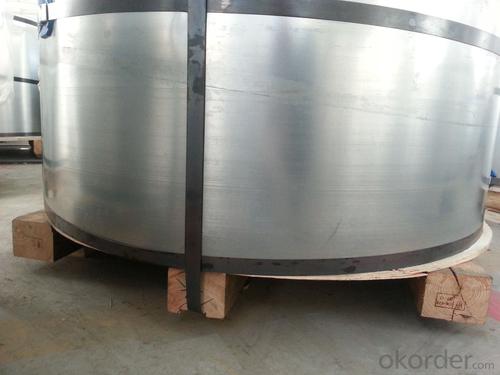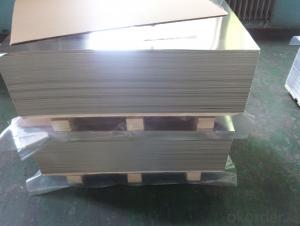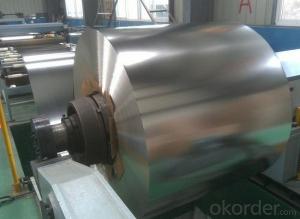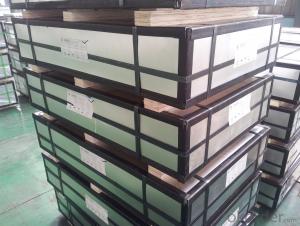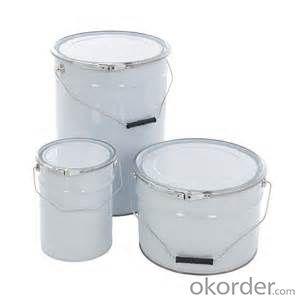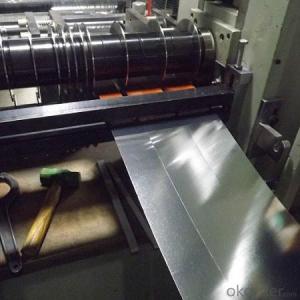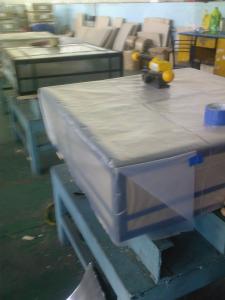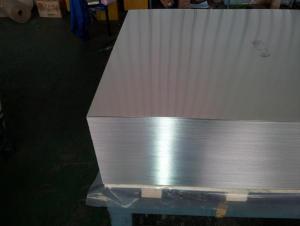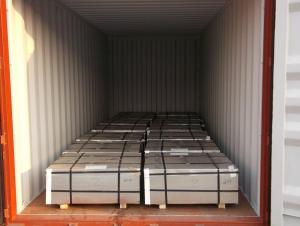High Quality of Tinplate for Paint Chemical Can
- Loading Port:
- China Main Port
- Payment Terms:
- TT OR LC
- Min Order Qty:
- -
- Supply Capability:
- -
OKorder Service Pledge
OKorder Financial Service
You Might Also Like
Our tin plate (TP) products are made by coating tin using electrolysis on the surface of thin coldrolled steel sheet (black plates), with a thickness of 0.14~0.6 mm. Its shiny surface finish, superb corrosion resistance and formability make tin plates an ideal choice for the food industry and industrial parts producers. Our tin free steel sheet (ECCS) is widely accepted as a more economical substitute for the tin coated steel. Our TP/TFS products are widely used in the production of 3-piece and 2piece (D&I, DRD) cans as well as can lids and bottoms. Our products serve a variety of purposes, including material for steel EOE, toys, and electronic parts.
Our Tinplates Specification:
Standard: ISO 11949 -1995, GB/T2520-2000,JIS G3303,ASTM A623, BS EN 10202
Material: MR,SPCC
Thickness:0.15mm - 0.50mm
Width: 600mm -1150mm
Temper: T1-T5
Annealing: BA & CA
Coil Inner Diameter: 508mm
Weight: 6-10 tons/coil 1~1.7 tons/sheets bundle
Passivation:311
Oil: DOS
Surface: Finish,bright,stone,matte,silver
Packing:
1、For sheets: plastic or waterproof paper, metallic cover and angles, steel strips,wooden pallet.
2、For Coils: plastic or waterproof paper,plastic protect plate,steel strips.
Both Prime and Second Quality Are Available!!!
- Q: What are the advantages of using tinplate?
- There are several advantages of using tinplate. Firstly, tinplate provides excellent protection against corrosion, making it ideal for packaging food and beverages. It also has a high strength-to-weight ratio, making it lightweight yet durable. Additionally, tinplate is easily recyclable, making it a sustainable choice. It can be easily shaped and formed into various designs, making it versatile for packaging purposes. Lastly, tinplate provides a visually appealing and glossy finish, enhancing the overall aesthetic appeal of the product.
- Q: Can tinplate be used for packaging perishable goods?
- No, tinplate is not suitable for packaging perishable goods as it is not airtight and does not provide adequate protection against moisture and oxygen, which can lead to spoilage of perishable items.
- Q: How does tinplate contribute to the durability of construction materials?
- Tinplate contributes to the durability of construction materials by providing a protective layer that is resistant to corrosion and rust. This helps to prevent deterioration and prolongs the lifespan of the materials, making them more durable and able to withstand harsh environmental conditions.
- Q: How does tinplate contribute to the circular economy?
- Tinplate contributes to the circular economy by being highly recyclable and reusable. It can be easily collected, sorted, and processed into new tinplate products, reducing the need for virgin materials. This closed-loop recycling system reduces waste, conserves resources, and minimizes the environmental impact of tinplate production and consumption. Additionally, tinplate's durable and protective properties prolong the lifespan of packaged goods, further contributing to a more sustainable and circular economy.
- Q: What are the food safety regulations for tinplate packaging?
- The food safety regulations for tinplate packaging vary depending on the country and region. However, in general, tinplate packaging must meet certain standards to ensure the safety of the food inside. These standards typically include requirements for the quality of the tinplate material, such as being free from contaminants and durable enough to prevent leaks or damage. Additionally, regulations may cover aspects like the use of food-grade coatings on the tinplate, proper labeling and identification of the packaging, and compliance with hygiene and sanitation practices during the manufacturing process.
- Q: What do tinplate do?
- Material to distinguish between SR (Pu Tongcai) and DR (two rolled material)Annealing is distinguished by CA (continuous annealing), BA (bell annealing), different annealing, and different hardness. Corresponding to different processing properties.
- Q: What are the health and safety concerns associated with tinplate?
- Some health and safety concerns associated with tinplate include potential exposure to tin and other metals, which may lead to respiratory issues if inhaled. There may also be concerns related to the use of certain coatings or paints on tinplate, which could contain harmful chemicals. Additionally, handling sharp edges or cuts from tinplate can pose a safety risk.
- Q: Can tinplate be used for coinage?
- No, tinplate cannot be used for coinage as it is not a durable or suitable material for minting coins.
- Q: What are the disadvantages of using tinplate in packaging?
- One of the disadvantages of using tinplate in packaging is its susceptibility to corrosion. Tinplate can rust when exposed to moisture and other corrosive elements, which can compromise the integrity of the packaging and potentially contaminate the product. Additionally, tinplate is relatively heavy compared to other packaging materials, which can increase transportation costs and carbon footprint. Lastly, tinplate is not as malleable as other materials, limiting its versatility in certain packaging designs.
- Q: What are the different closure options for tinplate packaging?
- The different closure options for tinplate packaging include twist-off lids, crown caps, pry-off tops, friction-fit closures, and lever lids.
Send your message to us
High Quality of Tinplate for Paint Chemical Can
- Loading Port:
- China Main Port
- Payment Terms:
- TT OR LC
- Min Order Qty:
- -
- Supply Capability:
- -
OKorder Service Pledge
OKorder Financial Service
Similar products
Hot products
Hot Searches
Related keywords
